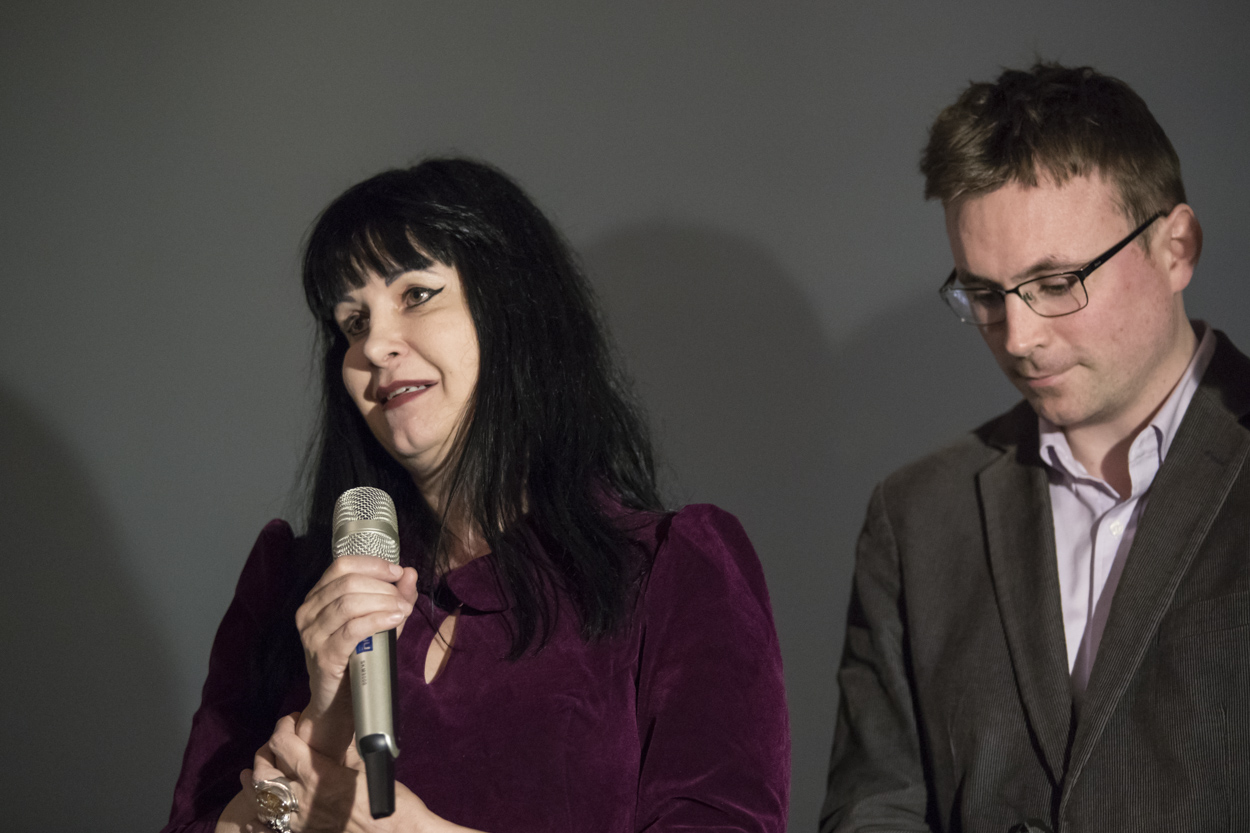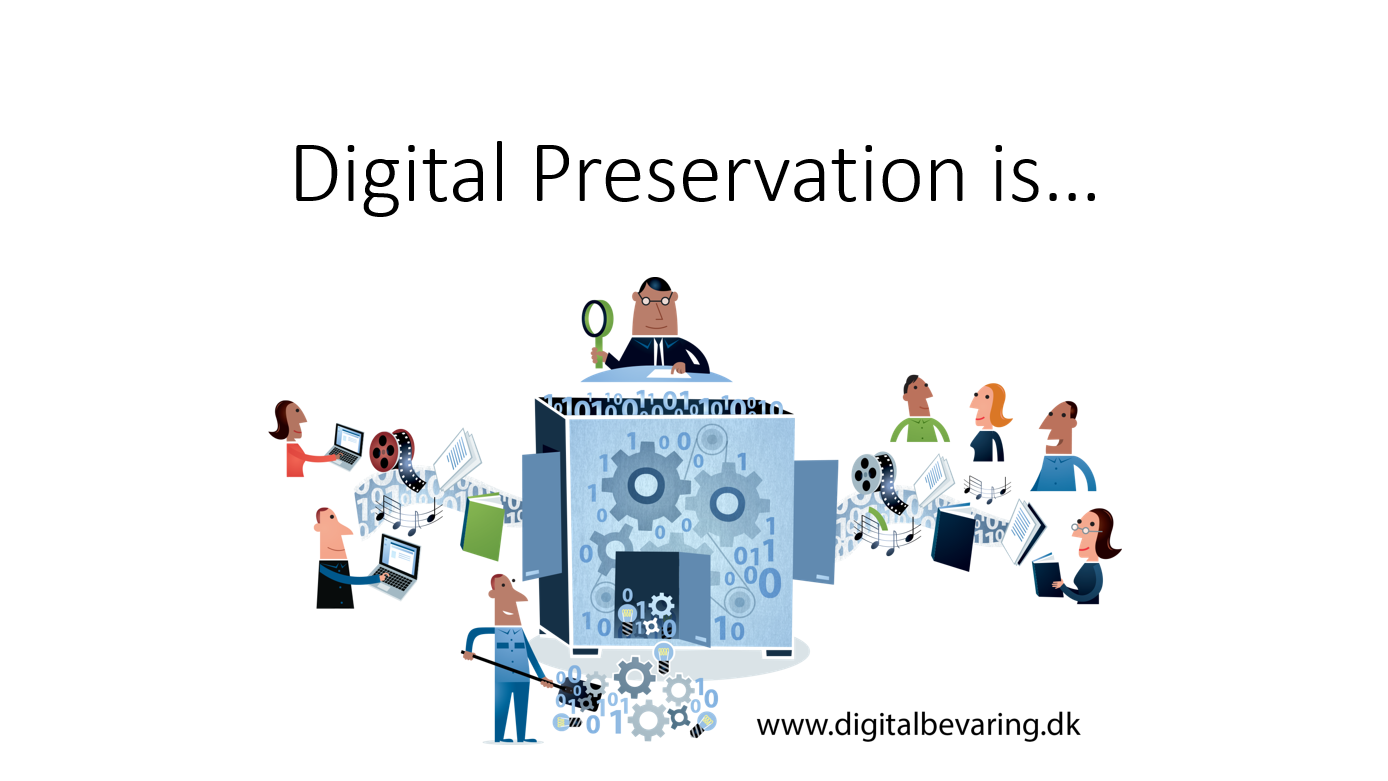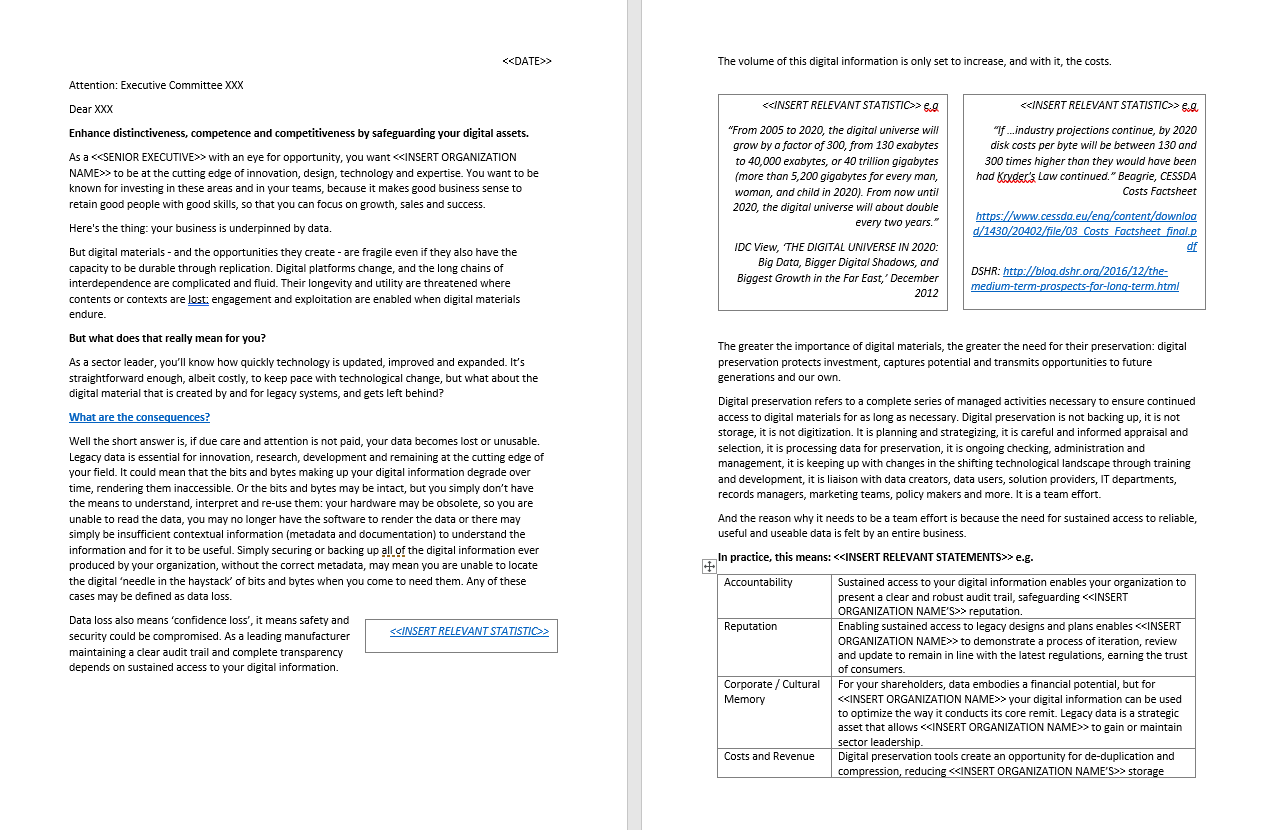DPC
Variation in national digital preservation policies
Alexander Roberts is Digital Humanities Manager/Research Data Manager at Swansea University and attended iPRES2018 with support from the DPC's Leadership Programme which is generously funded by DPC Supporters
Denmark and the Danish Archives Act 1992, 1996, 2000 and 2007
With preparations for iPres2019 in Amsterdam firmly underway and the deadline for submitting contributions having just passed, I have begun reflecting on some of the themes that resonated with me from last year’s amazing meeting at iPres2018. This was my first taste of the iPres experience, and it didn’t disappoint! My particular interests lie in computer science, IT areas including a focus on the performing arts (I’m a keen musician and composer). I found all of these areas well represented with keen and informed speakers elucidating on the finer points of applying arcane techniques and wizardly approaches to solving all sorts of digital preservation conundrums.
Acknowledgements and thanks
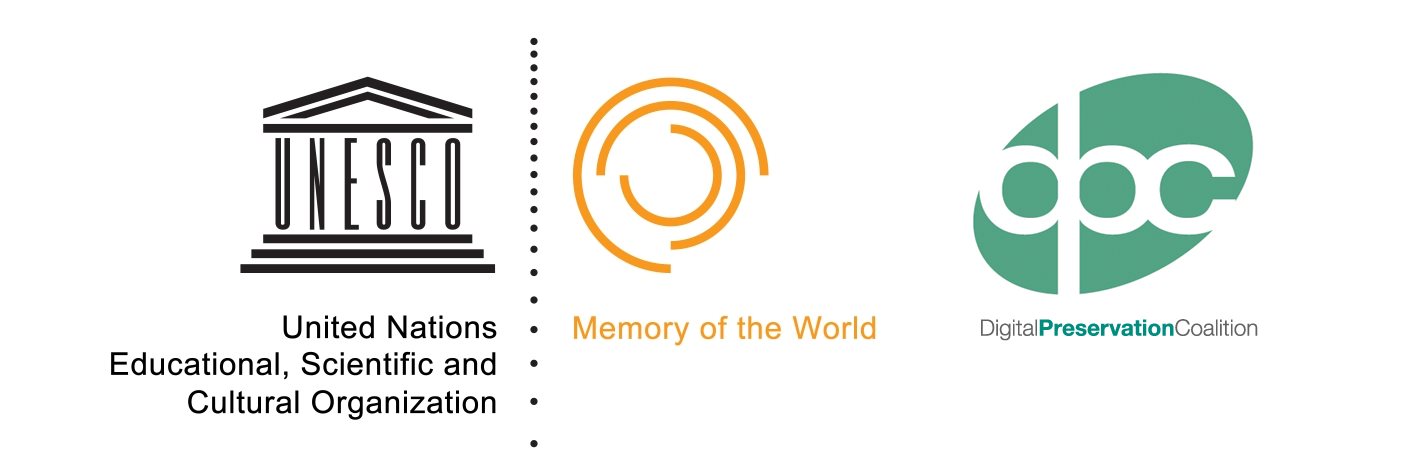
The Executive Guide on Digital Preservation was delivered through the collaborative efforts of DPC members and the digital preservation community and was supported by members of the UNESCO/MoW/PERSIST project.
- This resource was first imagined and scoped by the DPC’s Advocacy & Community Engagement Sub-Committee
- An Advisory Group comprising members of the DPC’s Advocacy & Community Engagement Sub-Committee and the UNESCO/MoW/PERSIST Policy Working Group provided advice, guidance and feedback throughout its development
- DPC staff worked with contributors from across the digital preservation community to devise and tailor the statements which form the content of the Executive Guide, particular thanks are owed to colleagues from:
- Academic Preservation Trust
- British Geological Survey
- BT
- Imperial War Museums
- Library and Archives Canada
- Lloyds Banking Group
- National Library of Ireland
- National Records of Scotland
- Tate
- University of Glasgow
- MirrorWeb
- Preservica
PASIG 2019, 12-14 Feb, El Colegio de México, Mexico City (part 1)
Rachel Tropea is Senior Research Archivist at the University of Melbourne and and attended PASIG2019 with support from the DPC's Leadership Programme which is generously funded by DPC Supporters
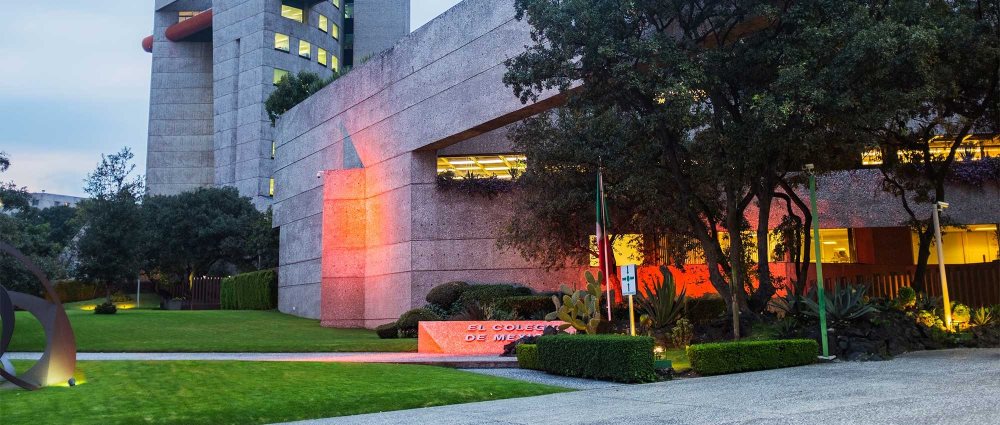
Photo sourced from El Colegio de México, A.C. Available at https://www.colmex.mx/assets/slider/slide-folleto_original_16.jpg?1508794010 [accessed 9 March 2019].
This is my first of two blog posts about PASIG2019 held at El Colegio de México (pictured above) in Mexico City. Here I focus on the history and organisation of Preservation and Archiving Special Interest Group Meeting (PASIG), and in my next post I delve into the content of some of the presentations. With the list of conferences growing seemingly exponentially, PASIG is a stand out for people working in digital preservation and archives.
VANISHING POINT: The Curation and Preservation of Virtual Reality
As Virtual and Augmented Reality become part of the artists’ toolkit, museums and galleries are tackling the issue of how to collect, preserve and curate Virtual Reality artworks, ensuring they have a life beyond the present.
Vanishing Point: The Curation and Preservation of Virtual Reality is a one-day conference that brings together industry experts from the BBC, Tate, V&A and BFI to discuss the challenges of preserving new media and look towards possible solutions. Speakers will include keynotes from Tom Burton (BBC) and Solomon Rogers (Chair of BAFTA Immersive Entertainment) with panel discussions featuring Jesse de Vos of the Netherlands Institute for Sound and Vision and George Stanley of the Department of Digital, Culture, Media and Sport.
Lunch and refreshments will be provided.
Programme and Recordings
Members please login to watch recordings
|
9.30am – 10.00am |
Coffee and registration |
|
10.00am |
Welcome, Jeremy Till (Head of Central St. Martin's) |
|
10.10am – 10.20am |
Judy Willcocks (Head of Museum, CSM) |
|
10.20am – 10.50am |
Setting the Scene for Industry, Solomon Rogers (CEO of Rewind, Chair of BAFTA Immersive Entertainment) |
|
10.50am – 12.10pm |
Makers of Makers Panel |
|
Chair: Solomon Rogers |
|
|
Nicola Francis (MA Virtual Reality at London College of Communication) |
|
|
Rebecca Gregory-Clarke (Digital Catapult) |
|
|
Nick Lambert (Computer Art Society, Ravensbourne, Lumen Art Projects) |
|
|
Panel Discussion |
|
|
12.10pm – 1.10pm |
Lunch and Showcase of student artworks, The Street |
|
1.10pm – 2.40pm |
Curatorial Preservation Panel |
|
Chair: Angela Doane (BFI) |
|
|
Jack McConchie, Tom Ensom (Tate) and Dom Biddulph (CSM) |
|
|
Melanie Lenz (V&A) |
|
|
Stephen McConnachie and Will Massa (BFI) |
|
|
Panel Discussion |
|
|
2.40pm – 3.00pm |
Tea and coffee |
|
3.00pm – 4.20pm |
National and International Strategy panel |
|
Chair: Judy Willcocks (Head of Museum, CSM) |
|
|
William Kilbride (Digital Preservation Coalition) |
|
|
Jesse de Vos (Netherlands Institute for Sound and Vision) |
|
|
George Stanley-Jones (Digital Culture DCMS) |
|
|
Panel Discussion |
|
|
4.20pm - 4.30pm |
Final thoughts and finish |
Channel 4 joins the Digital Preservation Coalition
Added on 18 March 2019
Channel 4 has joined the DPC as its newest Associate Member. Channel 4 is a public service broadcaster in the UK which is publicly owned, free to air but commercially funded. Their digital archive looks after significant amounts of web materials as well as business documents and a diverse range of digital materials.
DPA2018 Winners Webinars: EPISODE 5 - IFI Loopline Project
The Digital Preservation Awards 2018 (DPA2018) Winners Webinar Series provides an opportunity to learn more about some of the latest and best digital preservation initiatives, recently celebrated by the Digital Preservation Awards on World Digital Preservation Day 2018 in Amsterdam.
Each episode explores the winning entry for each category of the Digital Preservation Awards, providing an overview of each initiative, investigating how their work might be used within the community, and providing an opportunity for discussion with awards winners.
EPISODE 5: IFI Irish Film Archive Loopline ProjectWhen Irish creative and cultural documentaries maker Loopline closed its studios in 2017, it transferred its holdings to the IFI Irish Film Archive. Using in house development, this project assessed, catalogued, digitised, preserved and made available the entire Loopline Collection which begins in 1992, contains over 900 hours of material, and might otherwise have been lost. Join this webinar to find out about audio visual preservation, overcoming budgetary contraints and preserving a legacy. Speakers:
Resources: |
|
Watch the recording
Introduction
1. Audience and Purpose
The Executive Guide on Digital Preservation (the Guide) is intended as a resource to help those people responsible for the preservation of digital materials inform senior members within their organization about the relevance and importance of digital preservation, and the opportunities the preservation of digital materials can create.
Users of the information within this Guide may belong to memory and heritage institutions, commercial or financial organizations, government bodies and not-for-profits. The development of this Guide has been supported by United Nations Educational, Scientific and Cultural Organization Memory of the World PERSIST Project (UNESCO/MoW/PERSIST). UNESCO member states each have a role in implementing the UNESCO Recommendation concerning the Preservation of, and Access to, Documentary Heritage Including in Digital Form.
The Recommendation is a useful reference document when reaching out to organizations where memory is not their primary focus. Indeed, all organizations - public, private, local, national or international - are involved with the production of documentary and digital heritage and should be involved actively in its identification, promotion and protection. These groups are all encouraged to consider the sustainability of their digital materials and develop mechanisms to extract and preserve content.
In order to support the UNESCO member states, and organizations of all types, in their mission to preserve our digital heritage the Guide aims to be as broad reaching as possible. It does, however, recognize that even within the same sector or state, every organization is different, has different priorities, risk factors and motivators. It therefore presents a set of generic and sector specific statements and documents, which may be selected and tailored by individual organizations to assist in their internal advocacy work and in the application of the UNESCO recommendations.
Intended to be interactive and customizable, the Guide is presented as an online and accessible collection of resources, and contains:
- Generic statements which define digital preservation in a range of terms which may be understood by various organization types
- Information relating to digital preservation in specific sectors and organization types
- A summary of the importance of digital preservation generally and specifically
- Key motivators for digital preservation which may be relevant to different organization types
- Risks and opportunities associated with each of these key motivators
- Downloadable and customizable presentations
- Useful links to other related and relevant resources
- Statistics and evidence to be used in informing others and making the case for digital preservation
While the content will predominantly be used by existing advocates of digital preservation within an organization, the ultimate target audience for information and the messages it contains, is that of senior executives, legislators and budget holders, as well as decision and policy makers.
2. How to Use It
Information contained within the Guide may be used to create and deliver the message about digital preservation in the most relevant and appropriate format for a user’s organization.
For example:
A policy officer working in an archive or at a ministry in a country that is only just beginning with digital preservation may take the generic statements, as presented within the PowerPoint template, to explain the high-level concept to management.
A corporate archivist who understands the requirement for the auditability of digital documentation might select some of the risks associated with the legal and regulatory compliance ‘motivator’ to demonstrate to senior management the implications of not preserving.
Custodians of research data may use some of the sector specific risks and opportunities as part of a Business Case explaining why there is a requirement for digital preservation within a funding application.
Once the concept has been understood and digital preservation is established as a practice within an organization, some of the reputational opportunities identified within the Guide may be used to convince executives about the importance of accreditation or certification.
Some of the statements contained within the Guide may be applicable to more than one sector. These statements are presented as one way of communicating the importance, risks, opportunities and needs associated with digital preservation – however, as each organization and the content it manages is different, it is expected that users will need to customise the messages, selecting the most appropriate statements from across the sectors presented.
3. Reuse and Updates
The Guide is a community owned resource. The content has been contributed by volunteer members of the Digital Preservation Coalition (DPC) and aligned organizations and represents a small portion of our global digital preservation community. Nevertheless, it is hoped that the Guide will be still relevant to an international and cross-sector audience as much of the information is widely applicable and spans organization types and geography.
Once the messages contained within the Guide have been tailored for use within a specific organization, these customised messages are welcomed as updates for inclusion in future iterations of the resource, and their re-submission into the Guide is encouraged.
Where translations have been offered by DPC members and representatives of UNESCO member states these are provided as part of the Guide. Please note that not all parts of the Guide will have been translated into all languages, but requests to translate the Guide into other languages not currently offered are welcomed. Please email This email address is being protected from spambots. You need JavaScript enabled to view it. to talk about translating the Guide into other languages.
The content of the Guide is made available under an Open Government License v3.0 http://www.nationalarchives.gov.uk/doc/open-government-licence/version/3/ so that it can be re-used as widely as possible. Users are welcome to incorporate the information contained within the Guide locally into their own advocacy materials. Please use this form of acknowledgement in re-use: Executive Guide on Digital Preservation http://handbook.dpconline.org/ Digital Preservation Coalition, licensed under the Open Government License v3.0.
Templates
Download editable PowerPoint and Word templates and customize them with statements and evidence from the Executive Guide.
Facts and Figures
|
Supporting Evidence |
Key motivators |
|
Hurricane Sandy caused flooding in data centers resulting in potential loss of business data |
|
|
U.S. Nuclear System Runs on Early Computers and 8-Inch Floppy Disks |
|
|
As much as 80% of scientific data from the 1990s is irretrievable |
|
|
Precedent-setting Supreme Court opinions contain links to online sources that are disappearing |
|
|
Meet the digital historians on a mission to preserve data for future generations |
|
|
Future-Proofing Critical Digital Data in an Increasingly Complex Global Regulatory Environment , extract from report undertaken by the IGI https://iginitiative.com supported by Preservica. Full report available here |
|
|
Preserving history and ensuring citizen access to digital government records using the cloud , extract from report undertaken by the IGI https://iginitiative.com supported by Preservica. Full report available here |
|
|
A Practical Approach to Governing 170 Years of Critical Corporate Records , extract from report undertaken by the IGI https://iginitiative.com supported by Preservica. Full report available here |
|
|
In regulated industries such as financial services, digital archiving can help firms meet specific compliance needs. MiFID II, for example, requires that all firms keep unalterable records of all electronic communications intended to conclude in or confirm a transaction. The unalterable, date and time-stamped format of digital archives can also provide organisations with legally admissible records of all online activity, enabling disputes to be more easily resolved. Information provided by MirrorWeb |
|
|
For brands and public sector organisations, digital archiving allows them to capture a permanent record of web and social media content, protecting it from alteration and unauthorised use. It also ensures that content continues to deliver value long into the future. The use of big data techniques such as sentiment analysis to understand customer engagement and brand perception over time, for example, could be used to inform future marketing strategy. Information provided by MirrorWeb |
|
|
2.5 quintillion bytes of data are created online every single day. To try and conceptualise that, if you laid out 2.5 quintillion one pence coins, it would cover the surface area of Earth five times over. Information provided by MirrorWeb |
|
|
Over 90% of all the data in the history of the world was generated in the last two years (although that window is shortening!). |
|
| 52% of links to web pages of government departments quoted in Hansard between 1997 and 2006 were broken by 2007 | Corporate/Cultural Memory |
|
Every single minute:
Information provided by MirrorWeb |
|
|
95 million photos and videos are shared on Instagram every day. Information provided by MirrorWeb |
|
|
The average size of a web page is approximately 3MB, and the average website is about 50/60MB. The time taken to crawl a website would depend on a number of factors, most notably on the make up of the URIs, i.e., how many media files, pages, images, PDFs etc. there are. The other major factor is the structure of the site in terms of links and the CMS used, as this has a significant impact on the current limitations of crawl technology such as Heritrix. Information provided by MirrorWeb |
|
|
MirrorWeb recently worked with The National Archives to migrate the UK Government Web Archive, including Twitter and YouTube content, to the MirrorWeb cloud platform. It took two weeks to capture and transfer 120TB of data from 72 hard drives at The National Archives to internal hard drives, before transferring and hosting that archive in the cloud. To put that in perspective, 120TB of data is five and a half times the complete film catalogue on Netflix. Information provided by MirrorWeb |
|
|
The average university website might be around 30-60GB, and this would take anything between 6-20 hours on average to crawl, dependent on the platform and makeup of the content and links within. Information provided by MirrorWeb |
|
|
The cloud does not need infrastructure to accommodate growth, cutting down on a lot of storage overheads and meaning less costs for customers. For MirrorWeb to archive 30GB of website data, it would cost just £650 for the year, and £300 for a social media account annually. Information provided by MirrorWeb |
Image Bank
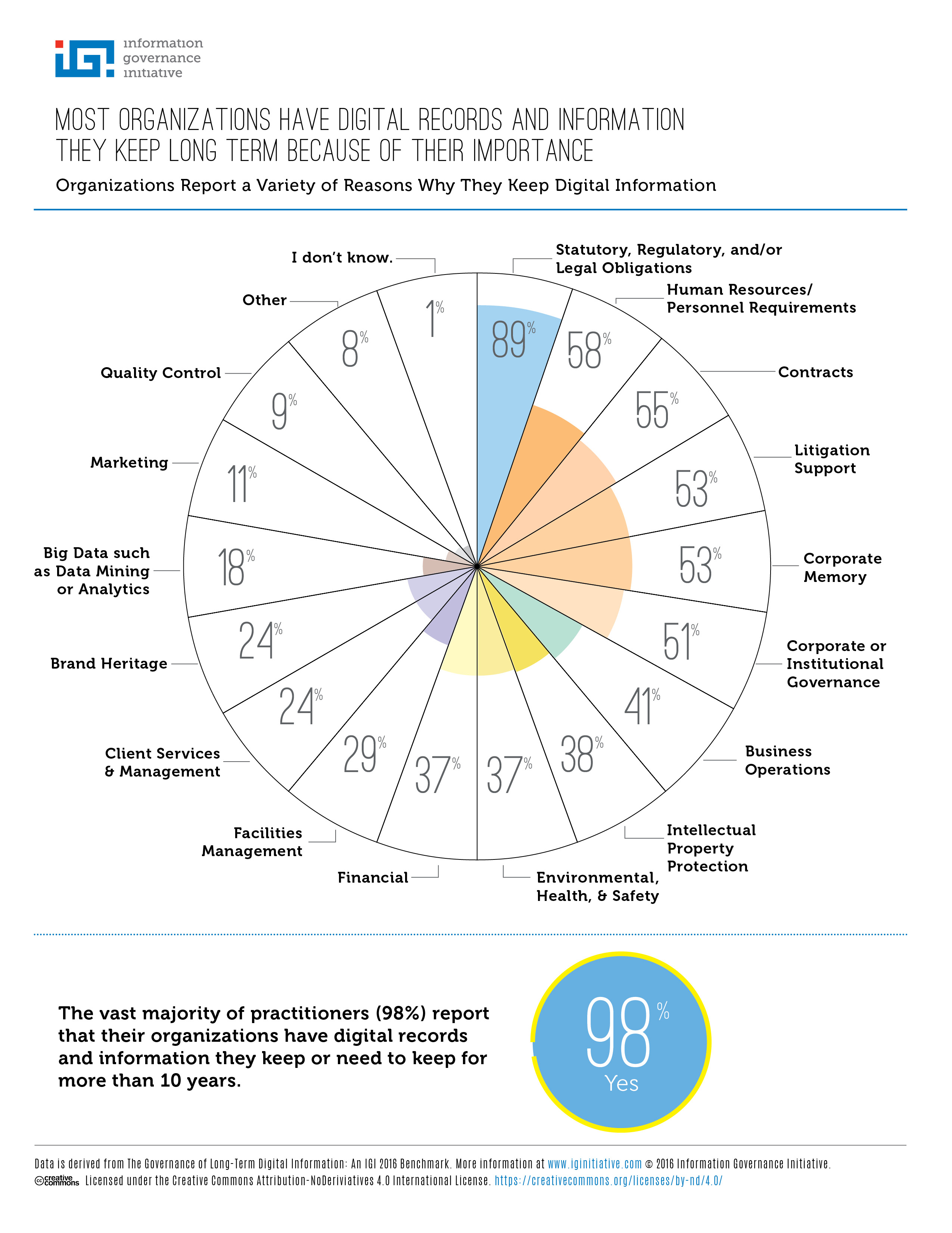
As a Minimum Digital Preservation Needs:
"...an enabling policy and regulatory environment including organisations and technical infrastructure which is appropriately resourced"
While each organization will robably prioritize these elements differently, essentially all organizations require the same four things to enable effective digital preservation:
-
An Enabling Policy and Regulatory Environment
including:- Broad understanding of the issues - policy-makers, regulators, and legislators need to understand the importance of digital preservation and the potential impact of inaction on all areas of government and society, e.g. health, economy, culture.
- Supporting Legislation - absence of this creates a barrier which people, procedures and processes and technology cannot overcome. Digital preservation concerns must be folded into legislation covering issues such as copyright and legal deposit.
-
Organizational Infrastructure
made of:- Institutional Buy-In – digital preservation must ultimately become core business, with project transitioning at the appropriate point in time. Effective digital preservation benefits the entire organization through sustained, efficient access to reliable, useful and useable data.
- People – a multi-disciplinary team is required with skills including information management and/or research data management, project and change management, software development, user engagement, and networking and storage maintenance amongst others.
- Procedure and Processes - identifying and developing policy, good practice and standards makes digital preservation achievable. It is essential to develop a risk management statement which supports prioritization of preservation actions and assigns roles and responsibilities for managing key digital materials in a transparent and professional manner.
-
Technological Infrastructure
made of:- Systems and Services - maintain high quality and sustainable digital preservation services by understanding the shifting technological landscape, the options available, workflow management, and the people required to support the processes and systems.
- Information Security – ensure digital materials are stored securely, only accessed by authorized users, and authenticity and integrity are maintained.
- Accountability – digital preservation systems should support organizations in being transparent in how they deploy their strategies. Where contracts and procurement processes allow, communicate with other preservation stewards to understand the value and costs of services offered.
-
Resources:
- Financial - sustainable, targeted and long-term funding is key to successful digital preservation. It must be funded as a part of core business rather than relying on grant/project funding to enable effective planning and consistency.
- Human - an appropriately skilled workforce must be created. Staff should have the skills to communicate their knowledge and the importance of digital preservation to different audiences. Invest in capacity, training and development to create a competent and responsive workforce ready to address the challenges of digital preservation. Ensure all staff have sufficient knowledge in digital preservation relevant to their roles to enable us to develop and maintain robust digital materials.
For hands-on practical guidance on getting started with digital preservation as well as an introduction to some of the organizational strategies you could adopt, take a look at the Digital Preservation Handbook.
































































































































![[image]](https://system.spektrix.com/platformtheatre/files/c5f5f720-25a5-45ee-a695-25a2a948aa06.jpg)
